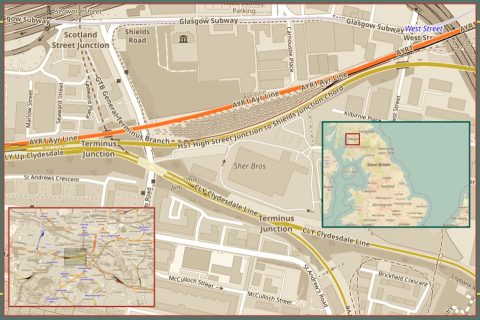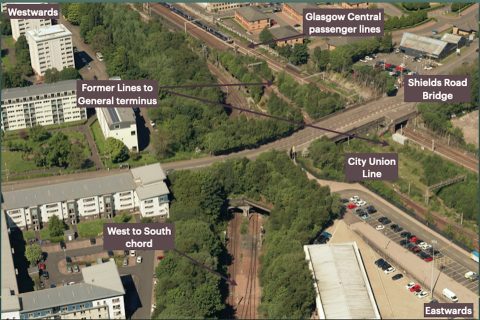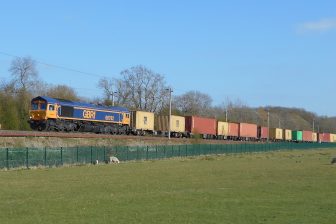
Complex Glasgow bridge replacement gets underway
Shields Road is a long boulevard that connects the south side of the Clyde with Glasgow’s leafy southern suburbs. It does that by way of a Victorian bridge over a selection of busy and critical rail routes. Now, after two decades of weight restrictions and traffic constraints, the bridge is to be replaced in a year-long project that will be one of the biggest ever city-centre civil engineering projects undertaken by Network Rail in Scotland.
From now until August 2024, Glasgow commuters will have to negotiate a series of diversions and alternative routes if their usual route takes them over the Shields Road Bridge. As the bridge leads on to the myriad of slip roads for Europe’s widest freeway – the sixteen lanes of the M8 motorway that characterises modern Glasgow – then expect there to be more than a few motorists who might find the train a better option for the next twelve months.
Critical artery for the city
Shields Road on the south side of Glasgow city centre will close to traffic for a year to enable the demolition and rebuilding of the bridge over the railway. The bridge has been subject to weight restrictions for more than 20 years, and the work will be undertaken by Network Rail and Glasgow City Council. While the road is a critical artery for the city, the railways that pass under it have an even greater significance for Glasgow and Scotland at large.

From August, work will see the diversion of a range of utilities that cross the structure followed by demolition of the existing bridge deck and repairs to bridge abutments. Utilities will then be reconnected over the bridge ahead of it fully reopening in summer 2024. During the year-long project, the north end of Shields Road will close to all vehicles. Pedestrian access will be maintained by a temporary bridge.
Retained as a freight route
The building of that famously wide M8 motorway meant the end of rail traffic to an equally famous Glasgow landmark – the extensive and tightly curved tracks of General Terminus, the south bank of the Clyde freight terminal that handled goods from all around Britain, and dispatched them all over the world. Such was the volume of traffic, delivered by a constant merry-go-round of freight trains, that the area stills bears the name Tradeston. Remarkably, that was far from the busiest line crossed by the Shields road bridge. The Glasgow Subway is unaffected, being a little way to the north of the work site.

Much of the traffic from the nearby passenger terminals of Glasgow Central and St Enoch stations pass under on two lines that meet just west of the bridge at Shields Junction. The former is still a very busy passenger route, while the latter is retained as a freight route (St Enoch station has long since closed). The freight route crossed the Clyde by means of the City Union Bridge, and is the subject of continual speculation as to its eventual reuse as a cross-city passenger route, providing through services from the substantial towns on the south side of the Clyde (Paisley and Greenock) and Ayrshire (Ayr and Kilmarnock) to the east of Scotland and Edinburgh. Their is a third active line which passes in a short tunnel just south of the bridge, providing a west to south connection for mixed traffic, principally freight and stock movements.
Rolling programme of maintenance work
The undertaking is bound to be a significant imposition on the lives of Glaswegians. “There is never an ideal time, and we understand the impact that this will have on those who use Shields Road and those living on the proposed diversion route”, said Jeremy Spence, Network Rail’s senior programme manager for the Shields Road bridge project. “Delivery of this project has been carefully planned with our contractors and with Glasgow City Council, and the programme will be delivered with the minimum possible inconvenience for the local community. We thank everyone in advance for their patience during this work.”
Although the physical work to demolish and reconstruct the bridge does not take twelve months, there is a prolonged period required to initially divert and then reinstate the various utilities which run through the structure. This work is essential to maintain utility supply to the local community. As well as removing the weight restriction, Network Rail say the project is part of a wider, rolling programme of maintenance work on railway structures to extend their lifespan and keep the rail network safe and reliable for passengers and freight customers. There is no disruption to the rail network from this work initially. However, the demolition and initial reconstruction of the bridge will see weekend closures of the passenger and freight lines in 2024.



